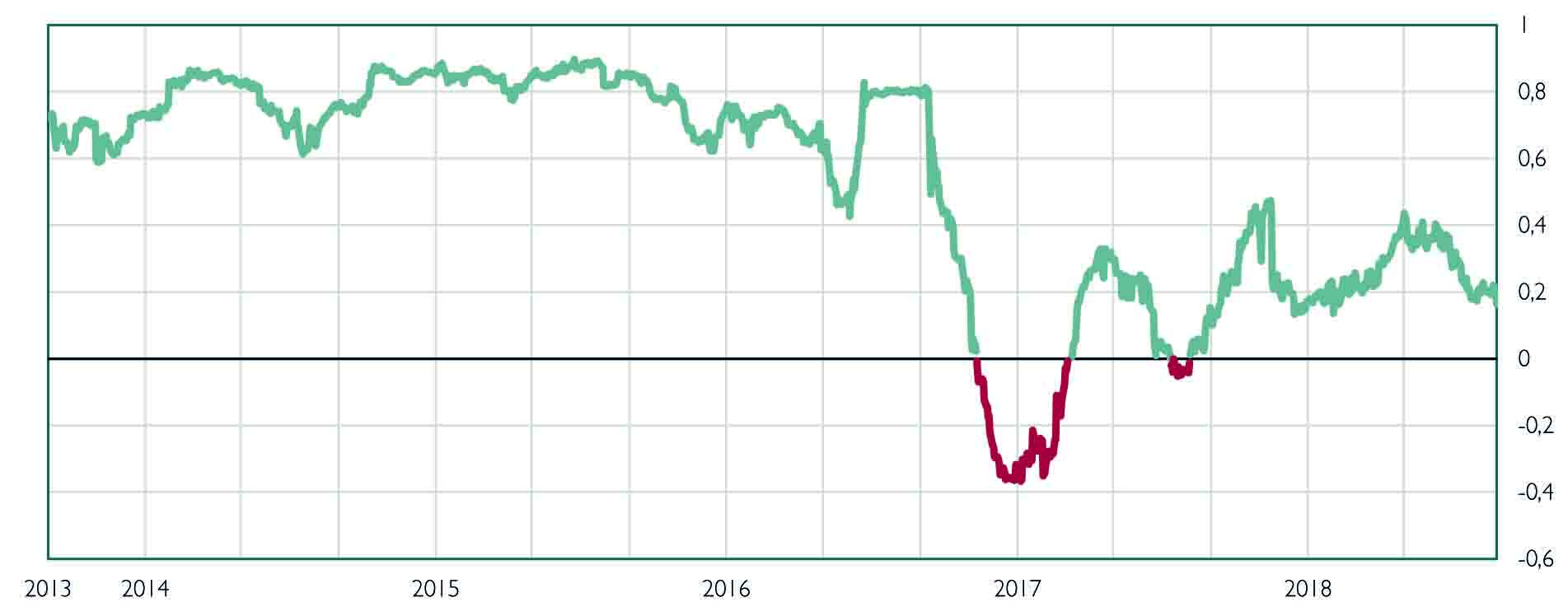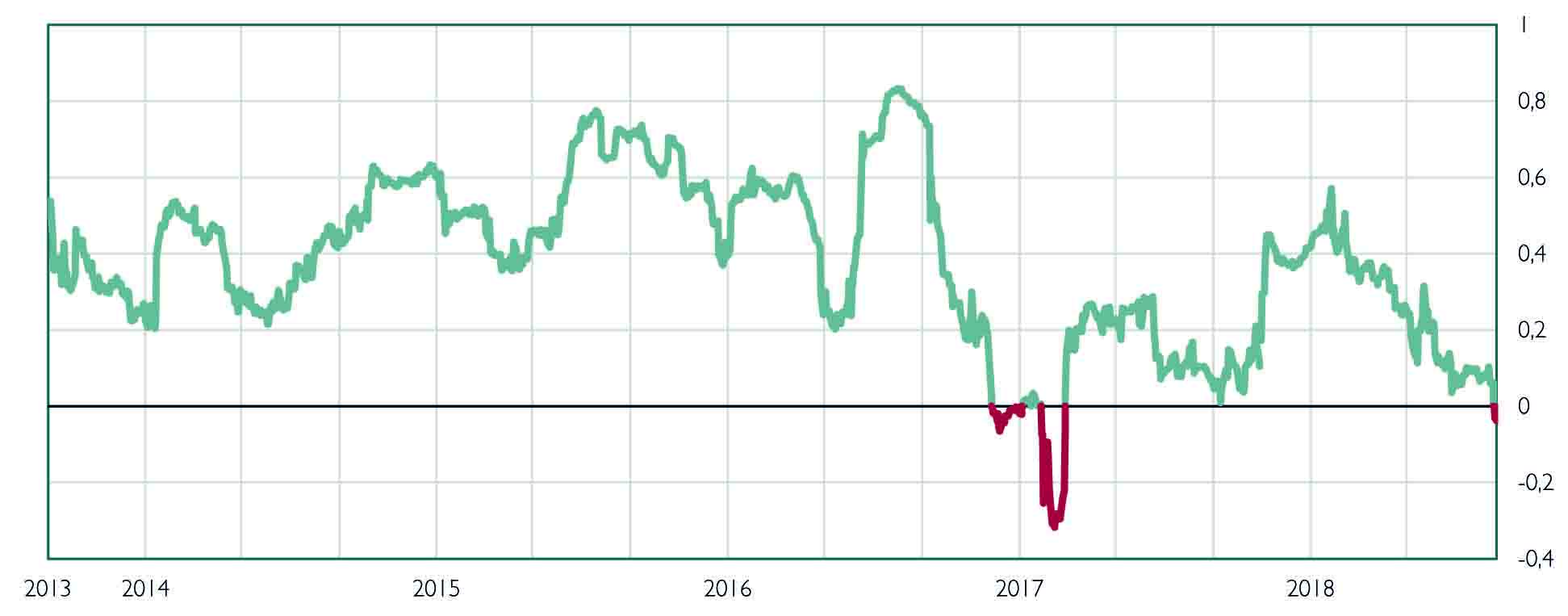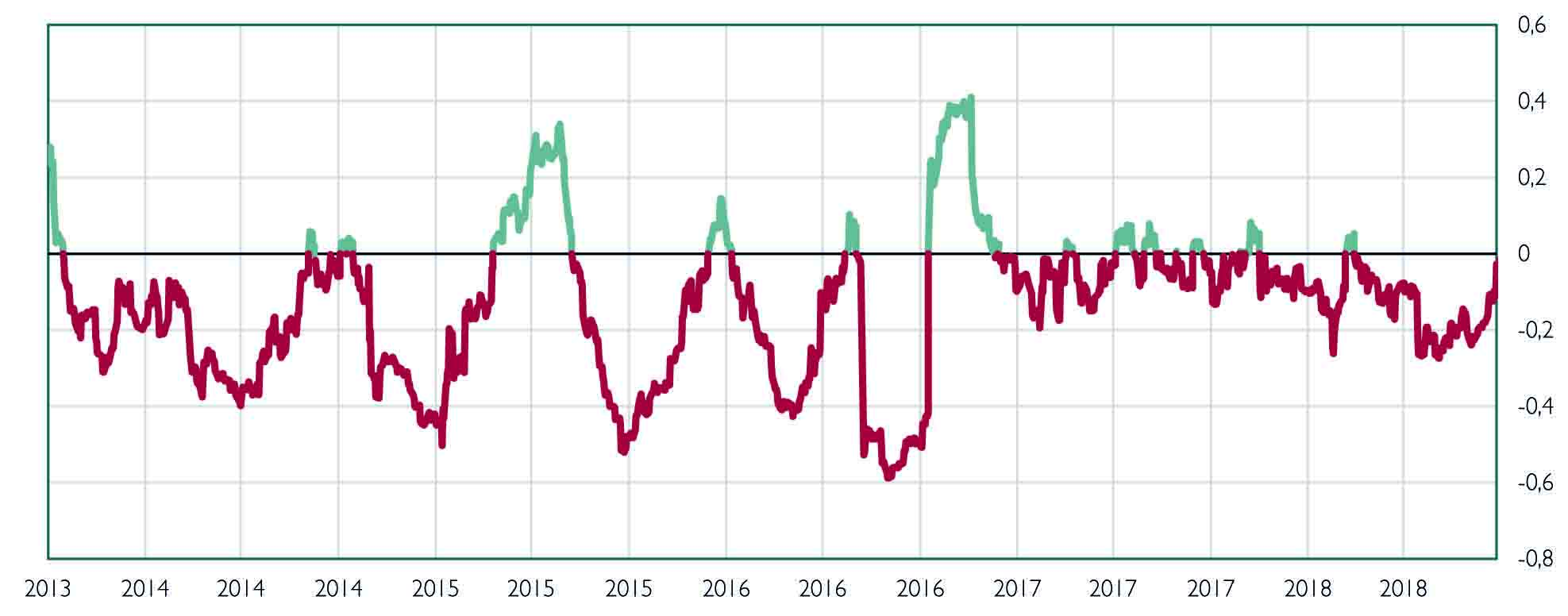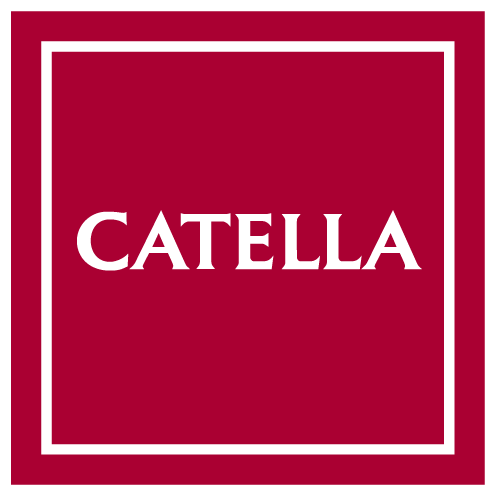The objective of Catella Hedgefond is to achieve stable returns at low risk, regardless of market conditions. The fund invests mainly in Nordic equities and bonds, as well as in derivatives. Sustainability is an integral part of the fund management and the fund applies negative screening for sustainability criteria and consequently avoids long positions in companies that produce tobacco, alcohol, commercial games for money, pornography, coal, or weapons. Derivatives are used in the management of the fund to protect its capital and increase return opportunities. The fund strives to achieve low correlation with performance in the equity, credit and bond markets and may thus both raise the expected return and lower the expected risk in a traditional equity and fixed income portfolio.

Figure 1. 60-day correlation between Catella Hedgefond and SIX RX

Figure 2. 60-day correlation between Catella Hedgefond and Barclays EU High Yield 3 % cap

Figure 3. 60-day correlation between Catella Hedgefond and OMRX T-Bond
When structuring the portfolio, we place great emphasis on diversifying risk. This applies when choosing sectors, but we also make sure that no individual holding or individual factor will have too much influence on overall fund performance.
| Five largest long positions as % of AuM | Five largest short positions as % of AuM | |||||
| Share 1 | 1.6% | Share 1 | -1.1% | |||
| Share 2 | 1.5% | Share 2 | -1.1% | |||
| Share 3 | 1.5% | Share 3 | -0.8% | |||
| Share 4 | 1.4% | Share 4 | -0.8% | |||
| Share 5 | 1.4% | Share 5 | -0.7% | |||
| 7.4% | 4.4% | |||||
Figure 4. The largest long and short positions in Catella Hedgefond
The fund's investments are based on fundamental analysis of individual companies plus traditional macroeconomic analysis. The fund aims to generate an annual return of 3-5 percent with a standard deviation of approximately 3 percent.
The return this year
The return so far this year has been disappointing. The performance of the fund depends partly on company-specific risk when it comes to picking shares and bonds. Generating a target return of 3-5 percent in the prevailing market means that the fund as a whole needs to take risk. This in turn creates scope for a range of outcomes, both upward and downward. Quite simply, our specific long company picks need to perform better than the stock market as a whole and our short picks need to perform worse than the market. Most of the returns in the fixed income portfolio come from more risky corporate bonds, known as high yield. The risk-free option of investing in government securities yields a negative return these days, so creating returns in the fixed income portfolio means adopting risk. This risk taken on through corporate bonds is offset by wide diversification between sectors and by holding a large amount of cash and cash-equivalent investments.
There are a number of explanations for this year's returns falling short of our target so far.
- For the fixed income portfolio, our belief at the start of the year was that European central banks would follow the US Federal Reserve and begin ratcheting back their expansionary monetary policy. The fund's fixed income portfolio was positioned with negative duration in order to earn money on rising interest rates. We anticipated less expansionary monetary policy and higher interest rates, which has so far proved to be wrong since growth expectations and inflationary pressures have waned a little. Higher interest rates have been postponed. Our short interest-rate position has now been closed at a loss. Given the absurdly low interest rates, this is still an interesting position to try to gain from − interest rates could rise a long way but they could hardly fall much further, leading to an asymmetry of outcomes.
- We have a bond holding in Lebara (a mobile virtual network operator active in several European markets) that has traded very weakly in the wake of doubts about its reporting. There is great suspicion and this bond is now trading at a price of 50-60 against a nominal 100. We have reduced our holdings in the bond, but we still have some exposure as we believe the pricing now more than well reflects the risks in its operations.
- The development of some of our equity positions has not been successful this year. We have adjusted our positions in some cases, but we believe the majority still offer attractive return potential. Although this involves individual stock picks, there are some common denominators; one of which is that many of the holdings are value-oriented under-priced stocks that have underperformed through the spring and summer as growth forecasts have been trimmed back, causing interest rates to fall. The total equity portfolio consists of 57 unique names on the long side and 22 on the short side, plus hedge positions in the form of equity indexes and stock index options. The stock selection takes place on the basis of company-specific assessments.
The fund's exposure to energy-related holdings, such as oil service companies, has been profitable this year and their development was very positive until mid-May. They have since fallen back somewhat but the fund retains its exposure. Our exposure is steered by the fact that the oil majors have held back on investment since the financial crisis of 2008/2009; our prediction is that this will slowly but surely change and oil-sector investments will make a comeback. The oil market is fairly balanced right now, but oil inventories are depleted and global available capacity is at a record-low, mainly due to a combination of strong demand and the greatly reduced production from Venezuela. Potentially tougher sanctions against Iran will be very difficult to absorb with higher output from other producers since capacity utilisation is already high. There is no shortage of long-term threats to the oil industry, but the obvious risk in the short term is considerably weaker economic growth.
Outlook
A low probability of recession remains our principal growth scenario, mainly because both monetary and fiscal policies are expansionary overall for the global economy. We should expect less expansionary monetary policy, but the pace of change is annoying slow, especially outside of the United States. The ongoing trade war could obviously intensify, but our assessment is that the tariffs communicated to date are largely priced into financial assets.
The weak development of many emerging countries could also spread to the developed world as it did during the Asian crisis of 1998, but we feel the probability of this is low. Although valuations of financial assets are generally high, our best guess is that the sluggish economic recovery since 2009 will continue, with some hurdles along the way. We regard the probability of drastically weaker growth as low.
Given this, we still believe that the fixed income portfolio will make a positive contribution to the fund's return. We also believe that our more value-oriented equity holdings have good potential to perform well since we regard the probability of recession as relatively low.
We think we have a number of exciting equity positions that have good return potential. At sector level we like our energy exposure through oil services. Furthermore, we regard bank stocks as undervalued, and higher interest rates could be a catalyst for higher valuations. We also have exposure to the care sector, which is favoured by demographics and is undergoing structural growth not reflected in current share valuations. The portfolio also has a number of restructuring cases/value cases such as the holdings in Getinge, Maersk, NCC, Pandora and Wallenius. The short side is still dominated by companies with valuations that are too high relative to our assessment of future growth. For some of these we can also see a potential trigger in our opinion that they will find it tough to counter increasing costs with price increases on their products.

